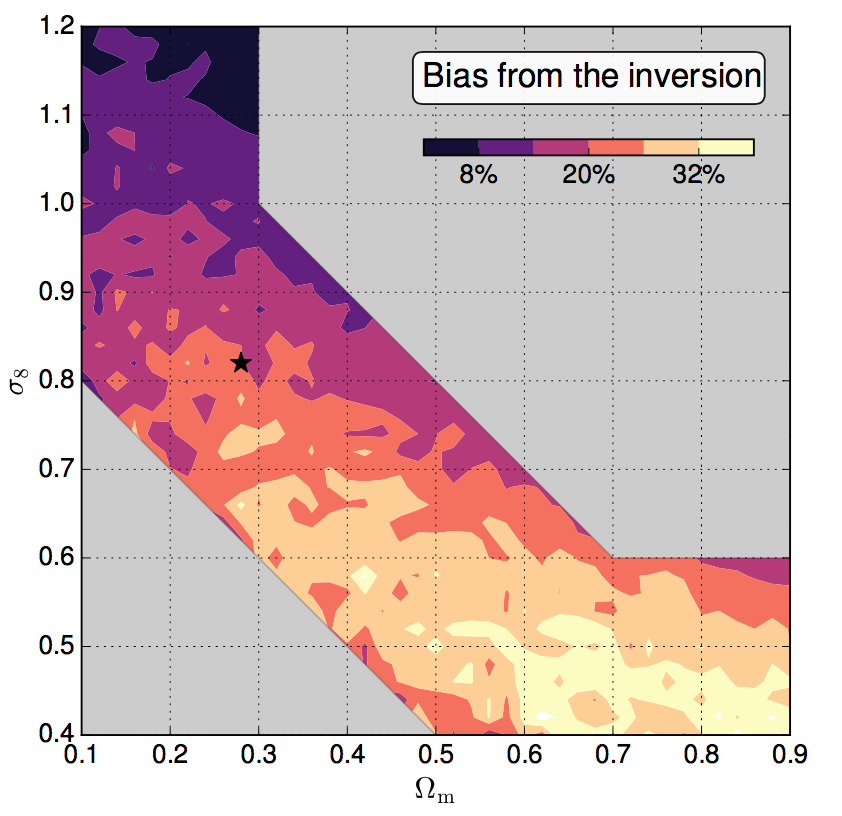| Authors: | C. Lin, M. Kilbinger |
| Journal: | Submitted to A&A letters |
| Year: | 2017 |
| Download: | ADS | arXiv |
Abstract
Weak-lensing (WL) peak counts provide a straightforward way to constrain cosmology, and results have been shown promising. However, the importance of understanding and dealing with systematics increases as data quality reaches an unprecedented level. One of the sources of systematics is the convergence-shear inversion. This effect, inevitable from observations, is usually neglected by theoretical peak models. Thus, it could have an impact on cosmological results. In this letter, we study the bias from neglecting the inversion and find it small but not negligible. The cosmological dependence of this bias is difficult to model and depends on the filter size. We also show the evolution of parameter constraints. Although weak biases arise in individual peak bins, the bias can reach 2-sigma for the dark energy equation of state w0. Therefore, we suggest that the inversion cannot be ignored and that inversion-free approaches, such as aperture mass, would be a more suitable tool to study weak-lensing peak counts.

